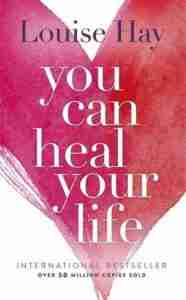Back to: ‘Books to Change Your Life’ Online Course
 Lesson 1: Understanding the Foundations of Life
Lesson 1: Understanding the Foundations of Life
- Objective: Lay the groundwork for a fulfilling life by understanding universal laws and the mind’s role in shaping reality.
- Books: You Can Heal Your Life (Louise Hay)
- Before Reading:
- Introduction to the power of thoughts and beliefs.
- Why self-awareness is the key to transformation.
- During Reading:
- Identify limiting beliefs and practise affirmations.
- Reflect on personal experiences tied to health and happiness.
- After Reading:
- Create a daily affirmation journal.
- Implement one new self-care practice for emotional healing.
- Key Takeaway: Your thoughts shape your life. Awareness is the first step to healing.
Reading Guide: You Can Heal Your Life by Louise Hay
This reading guide is designed to help you engage deeply with Louise Hay’s transformative book You Can Heal Your Life. It breaks the reading process into manageable steps and includes reflective exercises to help you integrate the teachings into your daily life.
Part 1: Before You Begin
Set Your Intention
- Reflect on why you are reading this book.
- Write down your goal: What do you hope to heal or transform in your life?
Familiarise Yourself with Key Concepts
- The power of affirmations: Positive statements to reprogram your subconscious mind.
- The connection between mind and body: How thoughts and emotions affect your physical health.
- Self-love: The foundation for all healing and transformation.
Preparation Exercise
- Write down three limiting beliefs about yourself or your life. For example: “I’m not good enough” or “I’ll never be successful.”
- Reflect on how these beliefs may have impacted your life so far.
Part 2: During Reading
Chapter 1: What I Believe
- Key Takeaway: Our thoughts shape our reality, and we can choose thoughts that empower us.
- Reflection Questions:
- What thoughts have dominated your mind recently?
- Do you believe you have the power to change your life through your mindset?
- Action Step: Start noticing negative self-talk and replace it with a positive affirmation (e.g., “I am worthy of love and happiness.”).
Chapter 2: The Problem
- Key Takeaway: Resentment, criticism, and guilt create dis-ease in the body.
- Reflection Questions:
- Are there people or situations in your life you are still resenting?
- How do you typically handle guilt or self-criticism?
- Action Step: Write a list of people or events you feel resentment towards. Commit to letting go of at least one grievance this week.
Chapter 3: The Power of Thought
- Key Takeaway: Every thought you think is creating your future.
- Reflection Questions:
- How often do you focus on what you don’t want instead of what you do want?
- What new thoughts can you introduce to support your healing?
- Action Step: Create an affirmation that reflects your desired future (e.g., “I am in perfect health.”). Repeat it daily.
Chapters 4-5: Resistance and Letting Go
- Key Takeaway: Resistance blocks healing; letting go opens the door to change.
- Reflection Questions:
- What areas of your life feel stuck or resistant to change?
- Are there beliefs or habits you are afraid to release?
- Action Step: Write down one fear or resistance you want to release. Pair it with an affirmation (e.g., “I am safe as I let go of the past.”).
Chapters 6-7: Forgiveness and Affirmations
- Key Takeaway: Forgiveness is essential for healing, and affirmations rewire the mind.
- Reflection Questions:
- Who do you need to forgive (including yourself)?
- How do you feel when you practise affirmations?
- Action Step: Practise mirror work by looking into a mirror and saying: “I forgive you. I love you. You are enough.”
Chapters 8-12: Healing Specific Areas
- Key Takeaway: Each area of your life (health, relationships, career) can be healed through self-awareness and loving thoughts.
- Reflection Questions:
- What specific area of your life feels out of balance?
- What limiting belief might be holding you back in this area?
- Action Step: Choose one area to focus on and write a specific affirmation for it (e.g., “My career is thriving, and I am doing work I love.”).
Part 3: After Reading
Reflection and Integration
- Review your notes and journal entries from the book.
- Ask yourself: How have my thoughts and feelings shifted?
- Reflect on how practising affirmations and forgiveness has impacted your life.
Create a Personal Healing Plan
- Identify three affirmations that resonate deeply with you.
- Develop a daily routine that includes:
- Morning affirmations.
- Five minutes of mirror work.
- Evening gratitude journaling.
Long-Term Practice
- Revisit the book periodically to reinforce its teachings.
- Share your experiences with others to deepen your understanding and inspire change in your community.
Additional Tips for Success
- Be Patient: Change takes time. Commit to consistent practice, even when progress feels slow.
- Celebrate Small Wins: Acknowledge every step you take towards healing and self-love.
- Stay Curious: Keep exploring how your thoughts and beliefs shape your reality.
By following this guide, you’ll maximise the impact of You Can Heal Your Life and begin transforming your mindset, emotions, and life from the inside out.



